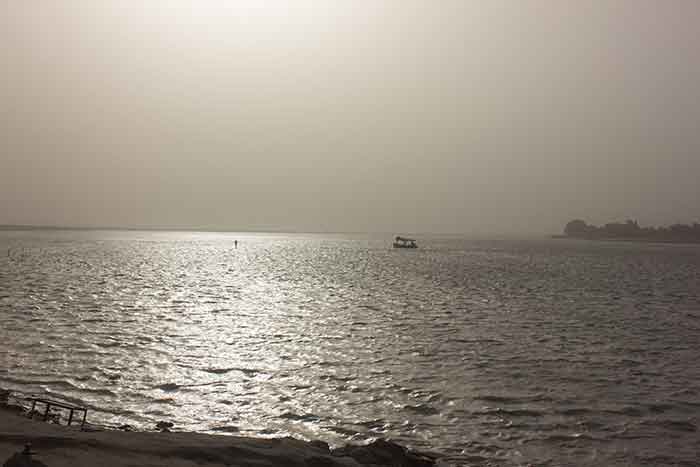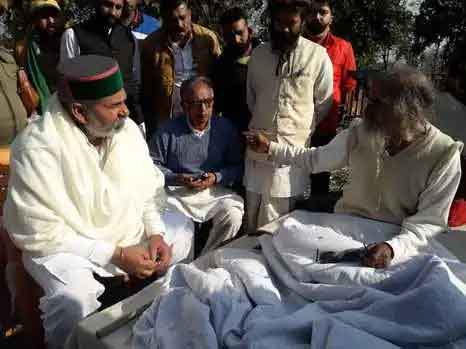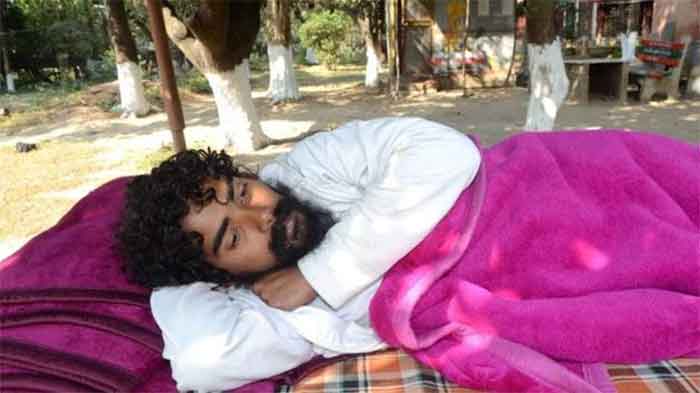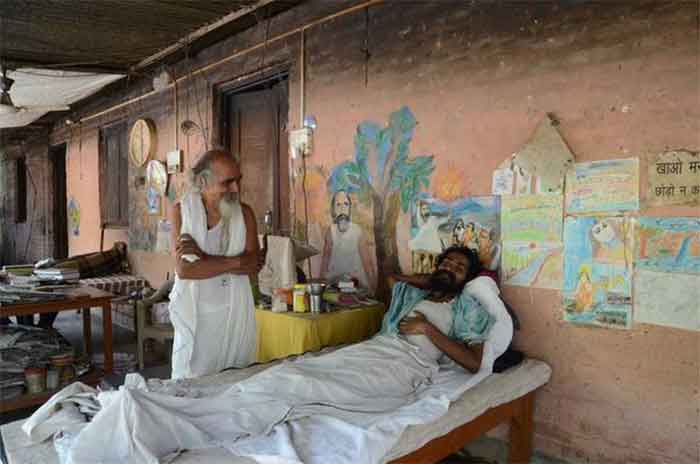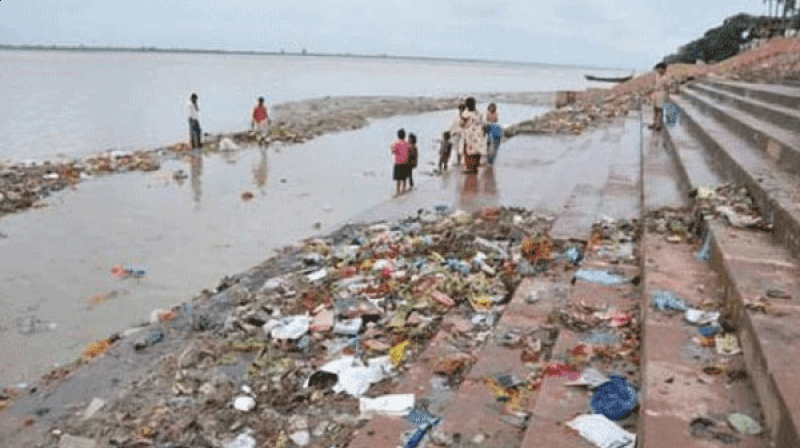
Protection of the Ganga river is one of those tasks in which the government can achieve great success with the enthusisastic involvement of people. Then why is it that success has so far proved so elusive? The available data for Varanasi, the most prioritized place for Ganga protection, reveals that in terms of the essential parameters which define acceptable water fit for bathing, the Ganga here remains much more polluted than what is considered to be clean in scientific terms.
This has happened despite the Namami Gange Project committing Rs. 20,000 crore ( 1 crore=10 million) to this task. One part of the answer is that on average about one-third of the sanctioned funds were just not released ,much more in some years, but clearly even in terms of the limited amounts spent the achievement is much less than what was expected.
Perhaps no other organization has monitored the water quality of the Ganga river so consistently and with such sincerity as the Sankatmochan Foundation (SF) in Varanasi, an organization known for its valuable, highly constructive role and innovative work on reducing river pollution. It has close spiritual linkages as well that are deeply rooted in the social harmony of Varanasi, the unity of its people and its shared heritage. Ideally the government should have put such an organization in a leadership role for protecting the Ganga, but the BJP with its deeply divisive agenda has kept such organizations at a distance, and thereby hangs the tale of why the highly promising, eco-friendly approach of the SF has been neglected and the BJP government has preferred the technocratic, expensive, big business oriented approach which experience has shown to be not very effective.
In the other critical area of the Himalayan reach of the Ganga, again in spiritual terms the most sincere institution of Matri Sadan has been at odds with the BJP Government in the state (Uttarakhand) as well as the Centre. Some leading saints of Matri Sadan have already sacrificed their life in the course of prolonged fasts extending to around 50 or even100 days. These include Prof. G.D. Aggarwal, who had a doctorate from the USA, taught at the IIT and went on to become the top pollution control official of India before giving up all to bcome a saint who devoted himself entirely to the protection of Ganga. Due to his scientific learning and stature, he could engage the government functionaries at seniormost levels in a dialogue on what was wrong with their approach to the protection of Ganga. He and other saints of Matri Sadan raised serious objections against excessive dam construction, indiscriminate mining and other ecologically destructive activities and when their pleas were not heard, they sacrificed their life in the course of long fasts.
Ravi Chopra is another renowned engineer and expert on Ganga and Himalayan ecology ( Prof. G.D.Aggarwal had been his teacher and mentor), widely known and respected for his sincerity and scholarship, frequently appointed on high level committees particularly those set up at the initiative of the Supreme Court. He recently resigned from one such committee as the views of ecologists on road construction and planning relating to saving trees, forests, farms and avoiding landslides and disasters were being ignored. The task of protecting forests and biodiversity in catchment areas of Ganga (or any other river) is very integral to that of protecting the river, and yet a Committee on 2013 floods in the Himalayan region, set up at the initiative of the Supreme Court and chaired by Dr. Ravi Chopra, stated that critical catchment protection projects are way behind schedule, calling this a life and death matter.
Why are those most respected for their knowledge as well as commitment to protection of Ganga getting alienated from the BJP government’s hype on Ganga protection? This is because they feel that the policies most suitable for protecting the river and its catchment areas are being neglected. In fact several persons closely involved with the protection of Ganga river who had earlier placed high hopes in the present Union government are now very unhappy and distressed with the actual state of affairs.
Reports prepared by senior Gandhian social activists of Uttarakhand including Suresh Bhai and Radha Bhatt reveal that tens of thousands of trees are in danger of being cut in highly eco-sensitive areas while a large number have been cut already. They point out that felling of one tree in careless ways on these slopes damages several other trees as well. What is more the massive rubble and debris generated in the process of cutting hills for indiscriminate construction work is finding its way in the river and its tributaries. The entire process is making the disaster prone region even more prone to landslides and floods.
It has been a long-standing demand of environmentalists particularly those involved more closely with the protection of Ganga that the construction of ecologically disruptive hydel projects in the Himalayan reach of the Ganga and its tributaries should be avoided. Unfortunately the Union government in recent times has not been sensitive towards this demand. In fact even the easier- to- accept demands of checking mining activities in and around the main river and its tributaries did not get adequate attention. Now the ecological problems and vulnerability to disasters are likely to get much worse because of the large-scale felling of trees. Thousands of trees, particularly deodar trees, in the most sensitive and sacred Uttarkashi-Gangotri stretch are threatened even now ( see Gangotri mein kaise bachenge deodar ke per, by Suresh Bhai, edit page, Amar Ujala , March 3, 2022).
Deforestation, rapid biodiversity loss and indiscriminate dam construction also have adverse impact on water quality and purity. In addition there has been significant failure in reducing the levels of domestic and industrial pollution. The emphasis has remained on more expensive, energy intensive sewage treatment plants requiring lots of money and electricity ( which often function much below capacity) while less expensive, more energy-saving options like those suggested by S.F. have not received the much-deserved attention. The continuing emphasis on more capital-intensive and expensive technologies favored by big business interests has implied that simpler, cheaper, more innovative and participatory, decentralized approaches to reducing pollution did not get a fair chance. In addition more ecological threats are appearing with ongoing ambitious plans for river transport.
The more visible work like beautification of ghats is more of cosmetic importance. In Varanasi many people believe strongly that many demolitions could have been avoided in the course of beautification and related work. These demolitions are also linked up with the loss of livelihood for several people in the city. There have been complaints that the traditions and heritage of the city are being ignored while taking up the so-called beautification works. Besides, culture and livelihoods should also be seen in well-integrated ways and issues like the deeply worrying decline in the livelihoods of weavers and craftpersons of Varanasi and nearby areas cannot be neglected in the mainstream discourse on Ganga and Varanasi.
The wider reality is that the Union government lacks a proper, comprehensive vision of what exactly is meant by protection of rivers and river-systems. Due to lack of this understanding highly disruprive schemes like national river-links are being emphasized although several eminent experts including former senior government officials have drawn attention to their huge adverse impacts. This is why those who can help the most in mobilizing people on Ganga protection are becoming alienated and despite the potential that exists clearly for making Ganga protection a mass movement, this potential has not been realized yet.
Bharat Dogra is Honorary Convener, Save the Earth Now Campaign. His recent books include Planet In Peril and India’s Quest for Sustainable Farming and Healthy Food.

